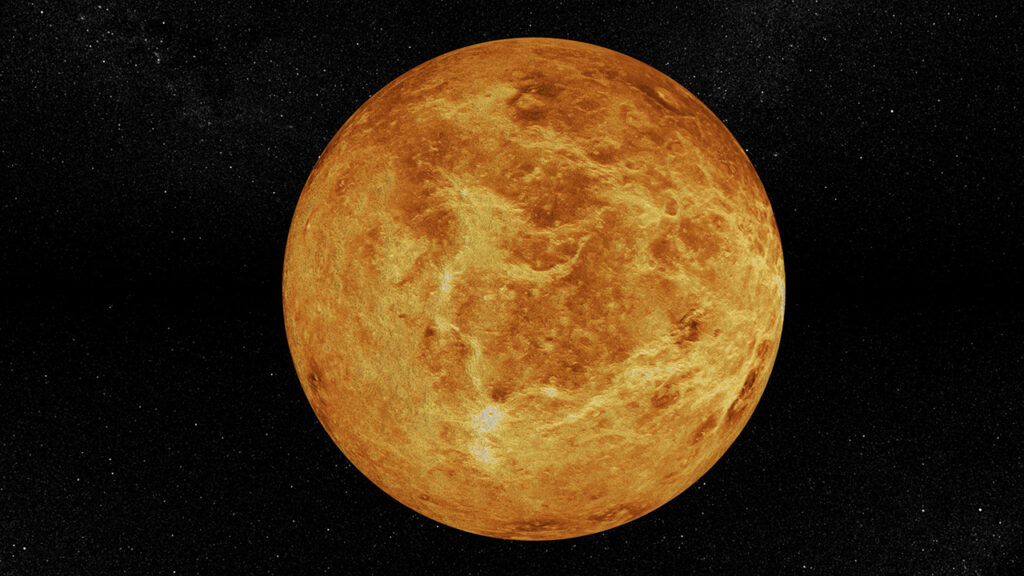Venus is the second closest planet to the Sun in the solar system, and its composition is similar to that of Earth, mainly composed of rocks and metals. In the West, it is named after Venus, the Roman goddess of love and beauty. In Chinese, it is called “Venus” because it is very bright and prominent in the morning or evening sky.

Venus with a diameter of about 12103.6 kilometers, is the closest planet to the Earth and is very similar to the Earth in size and mass, so it is called the “sisters planet” of the Earth. The surface of Venus is covered by thick clouds, making it difficult to observe directly. Through radar detection and other means, people have found that its surface is covered with volcanoes, mountains, valleys, and plains.
The orbit of Venus is almost circular, with a semi major axis of approximately 0.723 astronomical units and an orbital period of approximately 224.7 Earth days. It orbits the sun faster than the Earth, with an average speed of approximately 35.02 kilometers per second.
Due to its thick atmosphere and strong greenhouse effect, Venus has an extremely high surface temperature, with an average temperature of about 464 degrees Celsius, enough to melt metals such as lead. At the same time, the pressure on the surface of Venus is also very high, about 92 times the pressure at Earth’s sea level, equivalent to the pressure at a depth of about 1 kilometer in Earth’s oceans.
The sulfuric acid clouds in the atmosphere of Venus can form highly corrosive acid rain, but due to high temperatures, rainwater evaporates during its descent and cannot reach the surface of Venus. In addition, strong winds often occur on Venus, with wind speeds reaching hundreds of kilometers per hour.
Since the 1960s, countries such as the United States and the Soviet Union have launched multiple probes to Venus, including the US Mariner series, Magellan series, and the Soviet Venus series. These probes provide us with valuable data on the geology, climate, atmosphere, and other aspects of Venus.
Leave a Reply